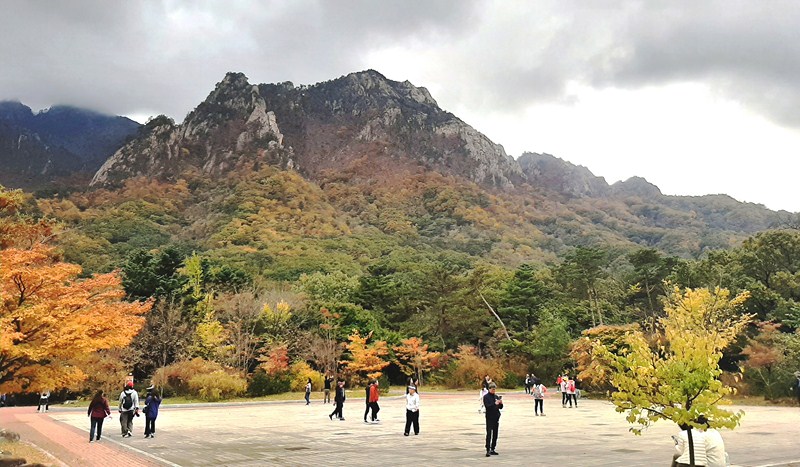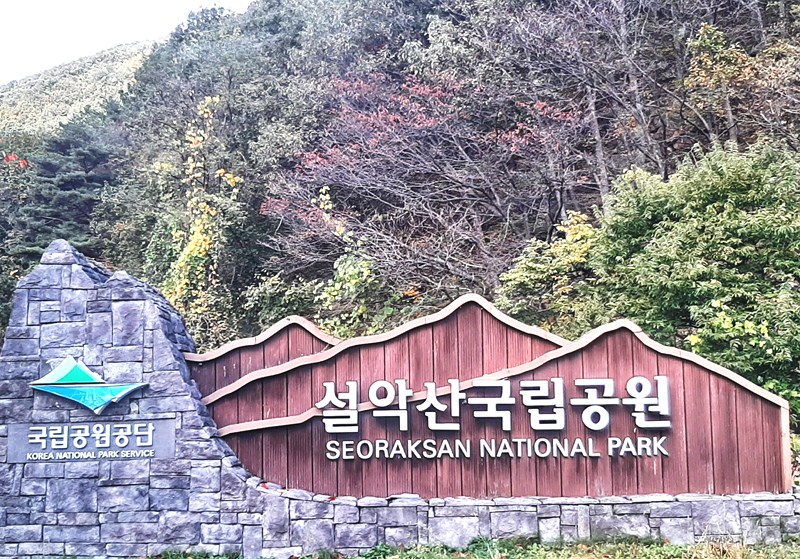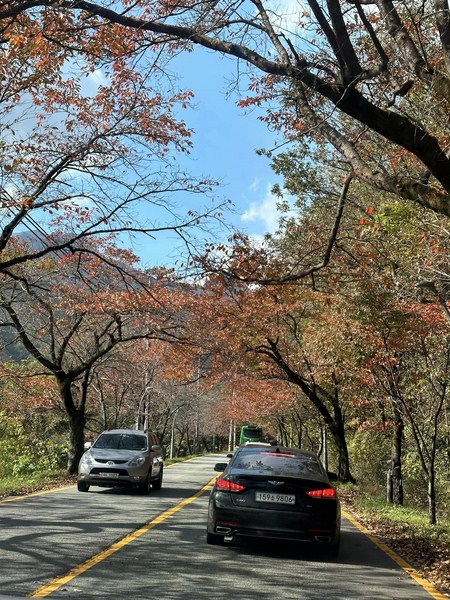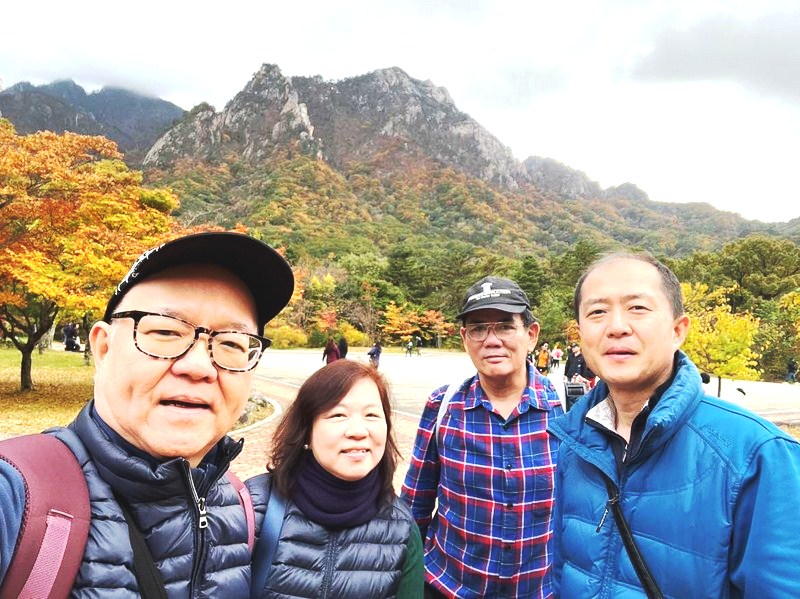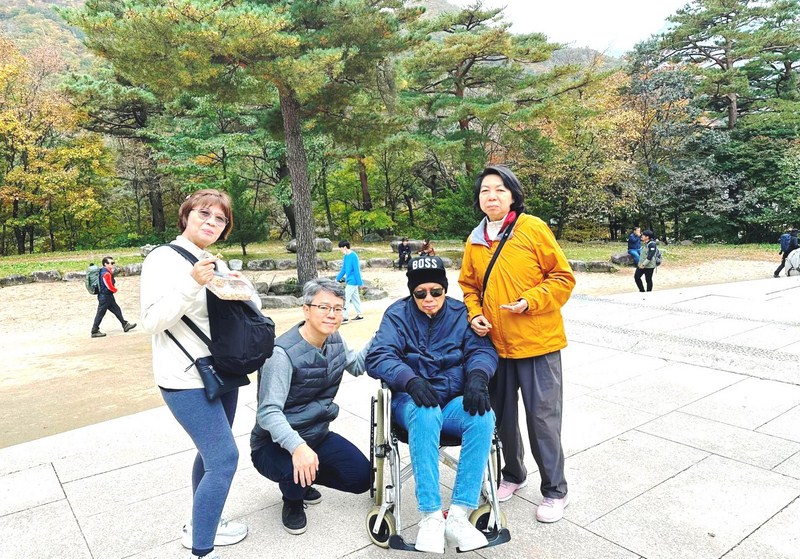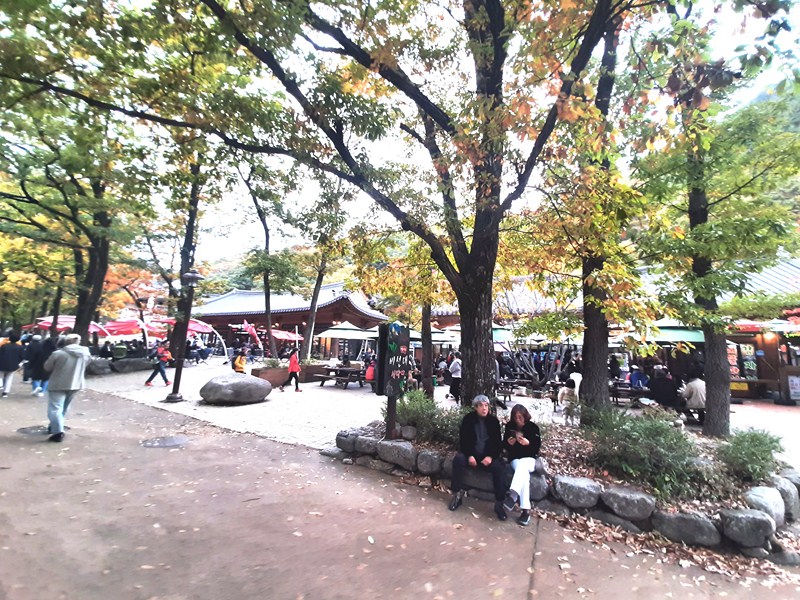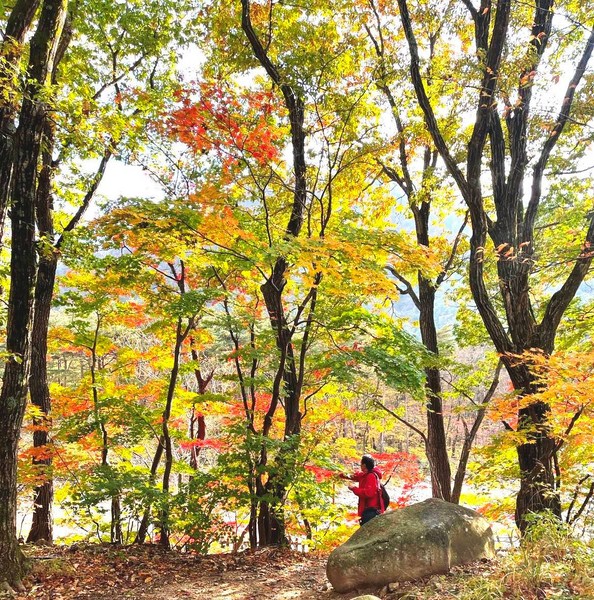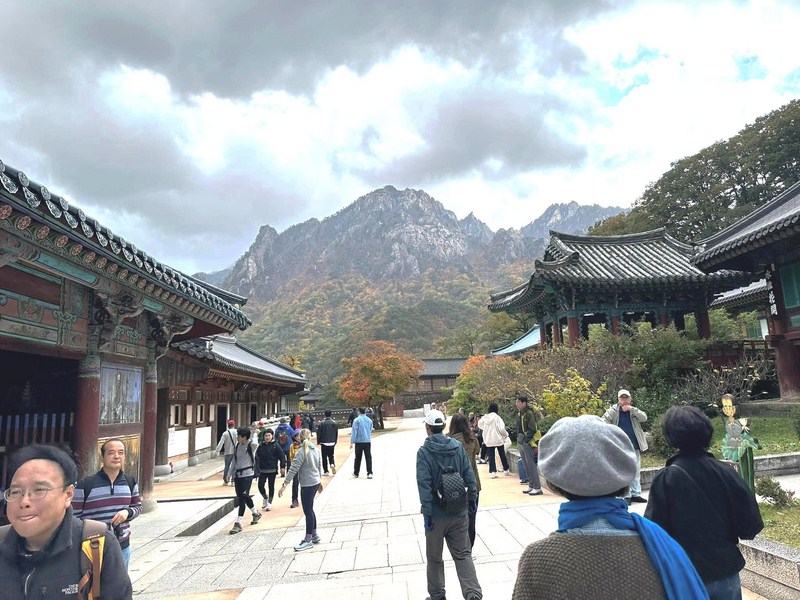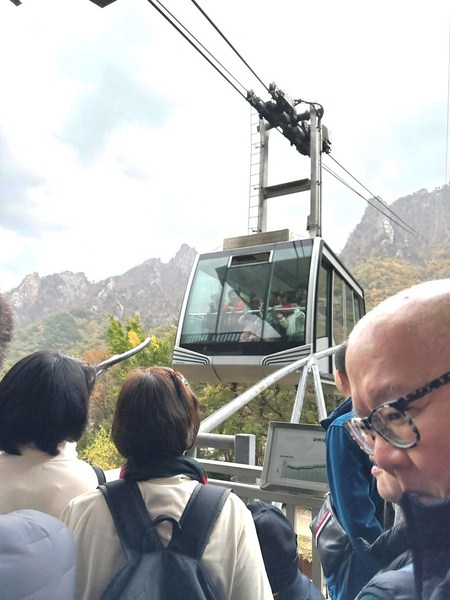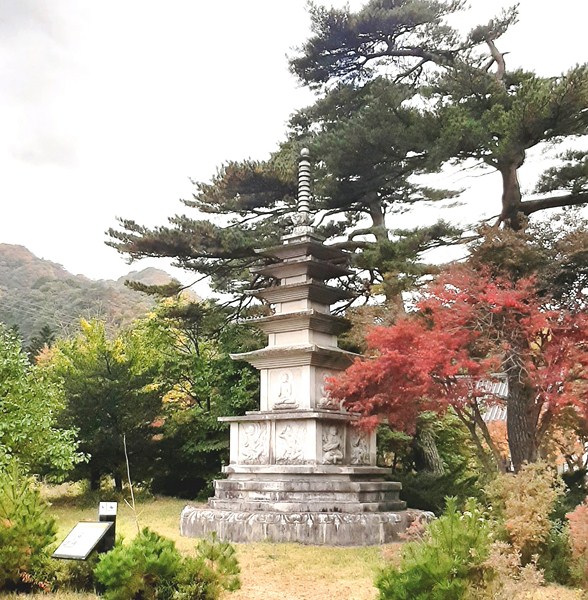Part of Cebu Blue Ocean Academy-sponsored South Korea tour
After our Korean breakfast at Natural Soul Kitchen Restaurant at Lotte Resort Sokcho, we had a whole day to explore the 398.22 sq. km. (153.75 sq. mi.) Seoraksan National Park (seoraksan-gungnipgong-won), located 3 hours northeast of Seoul. A national park in South Korea, it is listed by the South Korean government with UNESCO as a tentative World Heritage Site.
In 1965, the government designated the area as a 163.6 sq. km. (63.2 sq. mi.) nature reserve and, in 1982, UNESCO designated it as a biosphere reserve, the first in the country. On March 24, 1970, it became the first Korean national park to be named under the National Park Law. On August 9–16, 1991, the 17th World Jamboree (the biggest event for boy/girl scouts and held every 4 years) was held in Mount Sorak.
It was a straightforward 12 km. drive from Sokcho to Seoraksan (translated as “Seorak Mountain”) National Park. Highlights of our visit was our exploration of Sinheungsa Temple, one of two Buddhist temples and cultural landmarks within the bounds of the national park (the other is Baekdamsa), and a cable car ride, to the Upper Cable Car Station located 700 m. (2,297 ft.) above sea level, where we enjoyed an open view of various famous attractions such as Ulsan Peak (ranked as the most popular hikes at Seoraksan National Park due to the unique rock formation and the fabulous views from the Rock and Manmulsang Rocks.
Check out “Singheungsa Temple” and “Seoraksan Cable Car”
Located on the east-central Korean peninsula, it is divided into the eastern section or outer section (Oeseorak), western section or inner section (Naeseorak) and the southern section (Namseorak). Te reserve includes the Dinosaur Ridge, Injegun, Yanyanggun, and Sokchosi and some 28 mountain peaks (all part of the Taebaek mountain range measuring over 1,200 m. above sea level, the tallest being the 1,708 m. (5,604 ft.) high Daecheongbong (also called Seorak meaning “snowy peak”), the third highest peak in South Korea.
The ranges are composed largely of dissected granite and gneiss. The annual precipitation is about 1,000 mm. (39 in.) in Inner Soraksan and 1,300 mm. (51 in.) in Outer Soraksan. Popular with tourists and nature enthusiasts, it is home to many rare taxa of flora (the park is valued for its floral diversity) and fauna (1,562 animal species have been classified so far).
The park is home to about 1,013 species of known plants, with 822 vascular plant species. On the southern slope, pine trees such as the Siberian pine are abundant while the northern slopes of the mountain range are characterized by oaks and other deciduous trees. Thuja grow in the deep valleys while dwarf pines and yews grow on low and high slopes. Juniper, hawthorn, and Manchurian fir can also be found.
Other plants include forsythias, saw-worts and rare Hanabusaya asiatica. Local fauna include otters, Siberian flying squirrel, kestrel, Chinese sparrowhawk, lenok, Chinese minnow, spotted barbel and endangered Tristram’s woodpecker, Korean goral, and the increasingly rare Korean musk deer.
As our visit was during a weekend, the park was packed with local and foreign tourists. Luckily, we were able to park the car just across the bus waiting station where Frank, James, Kim and I joined a long queue of visitors waiting for the bus (which leaves every ten minutes) bound for Seoraksan National Park.
Once on board, the bus ride took around 20 to 25 minutes and we were all dropped at the bust stop across Kensington Stars Hotel (the most convenient place to stay in the park. We then had to walk, for about 10 mins., to get to Sogongwon (translated as “small park”), the entrance of the park with the most attractions and visitors.
The entrance of the park has gift shops, shops selling hiking gear, food and refreshment shops and small restaurants places (mostly Korean but very few Western). After we walked past the entrance, there is statue of an Asian Black Bear (the icon of the park’s residents) on top of a square structure bearing “Seoraksan National Park.”
Koreans love hiking and this is very evident in Seoraksan National Park. On a nearby huge board, you can find a number of amazing and different hiking and walking trails to the attractions in the park waiting to be explored, ranging from short 1-hour walks to full 2-day treks into the wilderness, each varying in length and difficulty. In fact, past the entrance are signposts showing directions to two beautiful waterfalls – Towangseong Falls Observatory (2.9 kms.) and Biryongpokpo Falls (2.4 kms.).
The 30-min., easy,1.5-km. Gwongeumseong Hike can be done after riding up the cable car. The 1.5 to 2-hour, easy Biseondae Hike features relatively flat out-and-back style trail walking alongside the water. The 2 to 3-hour, moderate 3 Waterfalls Hike takes you past Yukdam Falls, Biryong Waterfall and to the aforementioned observatory of Towangseong Waterfall. The final section is tough as it is a series of steep stairs for 500 m. The fairly difficult, 3 to 4-hour Ulsanbawi Rock Hike features lots of lots of stairs but the views at the top are absolutely incredible. The relatively short (3 to 4 hours) but difficult, 3.6-km. Geumganggul Cave Hike is quite the challenge, with a lot of elevation.
However, aside from the Sinheunsa Temple visit and Seorak Cable Car ride, we came to the national park for another reason. Every autumn, Seoraksan National Park, offering some of the most beautiful scenery in South Korea, is one of the first and most impressive places to see and enjoy the beautiful autumn foliage hues of red, yellow and orange which peaks in mid-October, the time of our arrival.
Seoraksan National Park: Seoraksan-dong, Sokcho-si, Gangwon-do, South Korea. Tel: +82-33-801-0900. Fax: +82-33-801-0969. Open daily, 6 AM to 8 PM. The cable cars operate from 9 AM to 6 PM. Admission: ₩4500 (adult, age 20 to 65), ₩2000 (youth, age 14 to 19) and ₩1000 (children, age 8 to 13). Cable car tickets cost ₩ 11000 for adult (middle school students or older) and ₩7000 for children (37 months to elementary school). Children under 36 months can ride the cable car for free. Coordinates: 38°07′30″N 128°24′58″E.
How to Get There: In Sokcho, take bus 7-1 or 7, which run on 30-minute intervals, at the bus stop opposite the Sokcho Express Bus Terminal, to Outer Seorak (Oeseorak). The whole bus journey takes about 30 minutes.
Cebu Blue Ocean Academy: Building 5, EGI Hotel and Resort, M.L. Quezon National Highway, Looc, Maribago, Lapu-Lapu City, Cebu 6015, Philippines. Tel: (032) 888-9868. E-mail: pinesbaguio@gmail.com. Website: www.cebublueocean.com. Baguio City (Benguet) Sister School: Pines International Academy, Romel Mansion, 3 Ignacio Villamor St., Brgy. Lualhati, Baguio City, Benguet, Philippines. Tel: 1 754-255-9818. E-mail: pinesbaguio@gmail.com. Website: www.pinesacademy.com.

